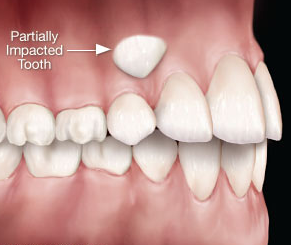Tooth impaction is a condition traditionally associated with
wisdom teeth, but did you know that it actually could occur with any tooth in
your mouth? When the canine teeth fail to erupt properly, this periodontal
procedure can gently bring the tooth down so that it can be included in the
braces treatment. This surgery is recommended if the tooth in question has not
erupted by the time the patient is 13 to 14 years old.
There are many reasons a permanent tooth can become impacted
and fail to erupt. Extra thick gum and bone, crowded teeth, crossbites,
improper tooth eruption sequence and genetics are just some of the causes. When
the patient is in need of braces, it is necessary that the hidden tooth be
brought down for inclusion in the orthodontic treatment.
The periodontist will conduct a thorough examination,
including x-rays, to discover the exact location of the tooth that didn’t
erupt, as well as the cause of the impaction. If the tooth has moved into the
lip or side of the jawbone, first the keratinized gum tissue will be cut away
to gain access. To prevent bone loss and gum recession, additional periodontal
procedures may be performed at this time. For impactions occurring in the
palate, the extra bone will be cut away to expose the hidden tooth. In both
procedures, a bracket will be bonded to the newly revealed tooth and it will be
attached to the braces with a power chain. The chain will slowly pull the tooth into its
proper position so that it can be included in the braces.
Tooth uncovery or surgical tooth exposure has enjoyed a high
success rate for patients experiencing tooth impactions. For the first few days
following the procedure, you can expect to feel minor discomfort and swelling
that can be treated with over-the-counter pain medication. In about two weeks following the surgery, a
rubber band will be installed at a follow-up appointment to activate the
eruption process.


No comments:
Post a Comment